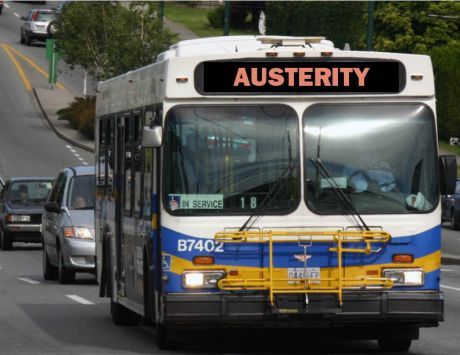News
You are here
BC public transit cutbacks threaten climate

October 5, 2012
There was little to cheer about after BC’s TransLink unveiled its draft 2013 Base Plan for the Lower Mainland on September 17. Due to shrinking revenues, TransLink says it cannot expand transit in the rapidly growing region. Instead it will maintain some levels of service, and scale back others in what it calls “efficiencies.”
Ironically, much of TransLink’s funding depends on car use. Two major sources of funding for transit are from fuel taxes and bridge toll revenue, with the third source being passenger fares.
As for cost-saving measures, TransLink itself acknowledges that these will negatively affect riders. With increasing numbers of people turning to transit, this will mean that buses and trains will become even more crowded than they are now.
Unfortunately, despite increased demand for transit, decreased service and increased crowding tend to force people back to driving their cars.
At a time when arctic ice melt is at its greatest and climate change is a reality that cannot be ignored, we need to demand and fight for ways to reduce car dependency by giving growing urban populations (like the Lower Mainland) transit options that meet their needs.
Section:
- Log in to post comments










